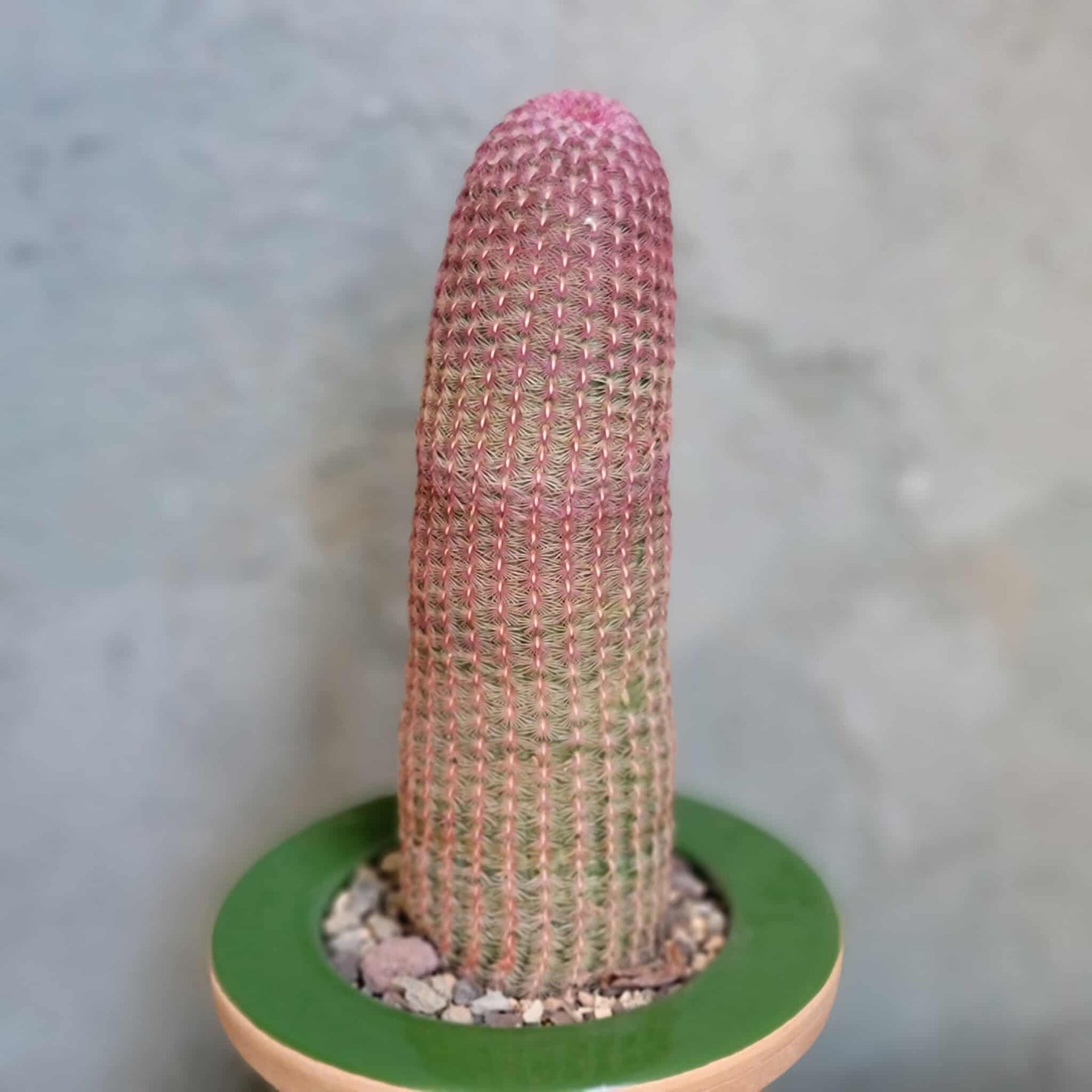Shangri-Ha Cactus Ranch
Echinocereus Rigidissimus v. rubispinus - Rainbow Cactus
Echinocereus Rigidissimus v. rubispinus - Rainbow Cactus
Couldn't load pickup availability
Echinocereus Rigidissimus v. rubispinus - Rainbow Cactus
You will receive a big specimen similar to the one shown here.
Measures approximately 8" tall above the soil line.
Roots as shown.
Showcased here in glazed Italian handmade pottery (sold separately).
Will be shipped bare root.
The rainbow hedgehog cactus (Echinocereus rigidissimus v. rubispinus) is a striking columnar cactus known for its vibrant, ruby-red spines and magenta flowers. It is a variety of the Echinocereus rigidissimus species and is native to the southwestern United States and northwestern Mexico.
Key Characteristics:
- Appearance: This solitary, stocky cactus has erect, cylindrical stems covered in closely set, pectinate (comb-like) spines. New spines are a brilliant magenta, pink, or ruby-red, which can fade to yellow or light pink as they mature.
- Size: Stems typically grow up to 10 inches tall and 3 inches in diameter.
- Flowers: The rainbow hedgehog cactus produces showy, funnel-shaped flowers in late spring or early summer. The blossoms are a bright pink or magenta with white throats and bloom in a ring on the crown of the stem.
-
Unique Spines: The specific name "rubispinus" refers to its red spines, a distinguishing feature of this variety.
Cultivation Requirements:
- Sunlight: Provide full sun exposure. The cactus's spine coloration becomes more intense with more sun.
- Watering: As a desert cactus, it is extremely drought-tolerant. Water thoroughly, but allow the soil to dry out completely between waterings to prevent root rot. Overwatering is a common issue with this species.
- Soil: Use a fast-draining cactus and succulent mix. The cactus prefers a neutral to slightly acidic compost with plenty of grit.
- Hardiness: It is cold-tolerant in USDA hardiness zones 8 to 11 but should be protected from prolonged freezing temperatures and frost. It can withstand temperatures down to about 10°F (-12°C) for short periods.
- Fertilizer: During its growing season in spring and summer, fertilize to encourage growth and blooms.
- Propagation: This variety is typically propagated by seed, as it rarely produces offsets.






















